
|
How I deal with Dew
|

|
In South Carolina, one thing we constantly have to deal with is humidity. A low humidity day here usually means under 70%. Most nights in the spring, summer, and fall months, as the night grows older, the humidity grows higher. So with cooled CCD cameras, dew/condensation is always a constant battle. My ST-8E is quite finicky, as if it gets the least bit damp, I will get a camera timeout error, followed by a unable to connect message. This means all imaging stops until I dry it out and then re cool it. To solve my set of circumstances, I have taken a two fold approach to prevent dew and condensation from forming. This involved installing a rear dew shield, and using a "Sweat Band" for the camera. The pictures below illustrate my solution. I can now make it through the wettest of nights without losing the camera.
Click on any thumbnail picture for the larger version
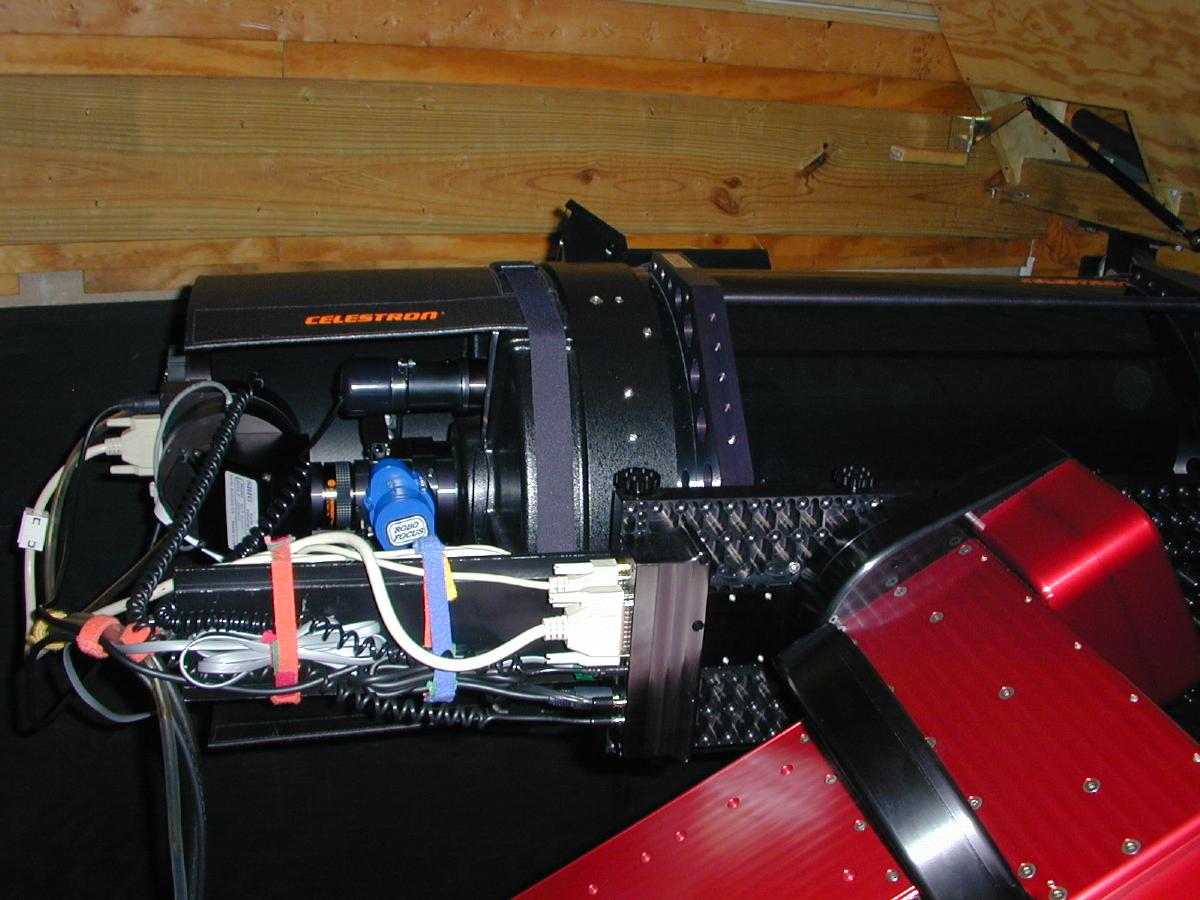
|
If a dew shield works for the front of the scope, why not for the back. A Celestron 8" dew shield held in place by an elastic velcro band keeps the business end dew free.
|
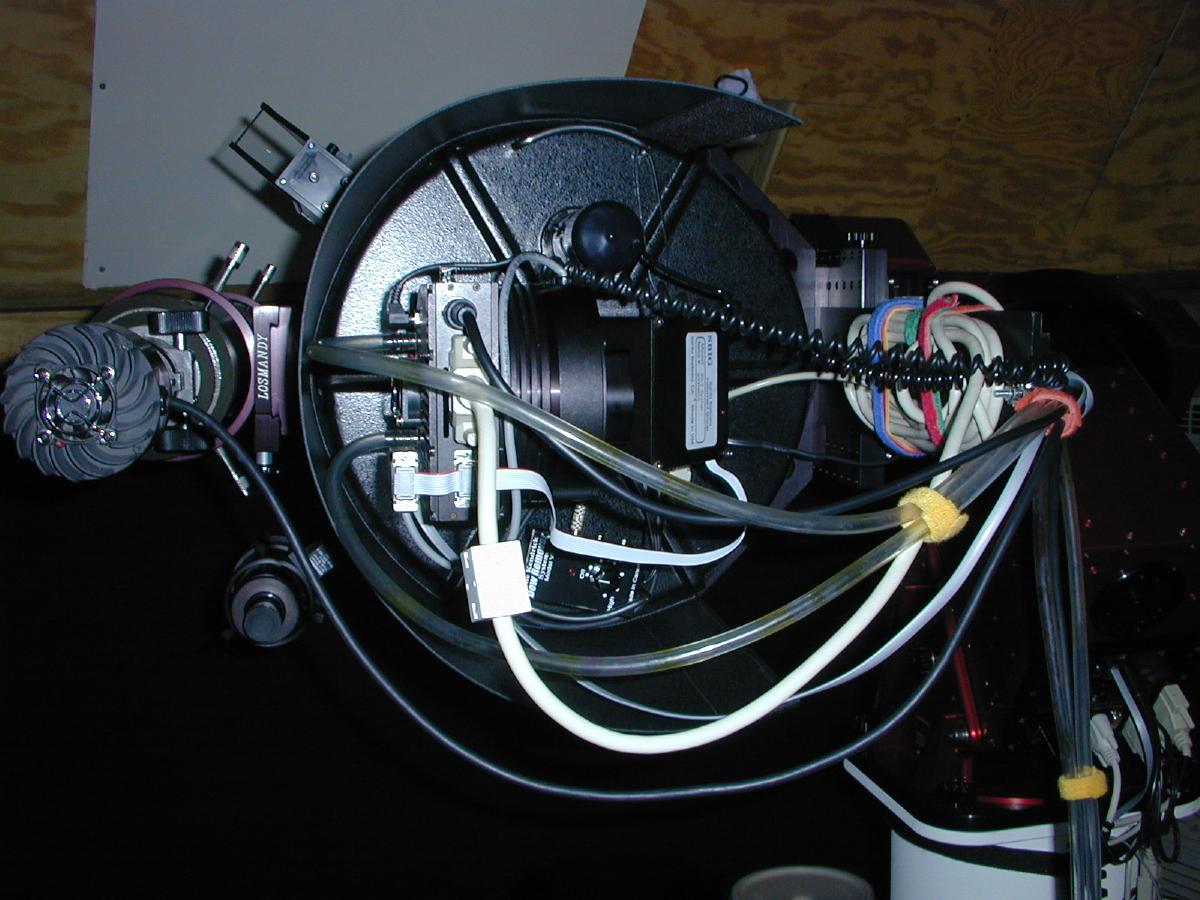
|
A GEM never exposes its "underbelly" to the sky, so the dew shield only needs to cover the top 60% of the back end.
|
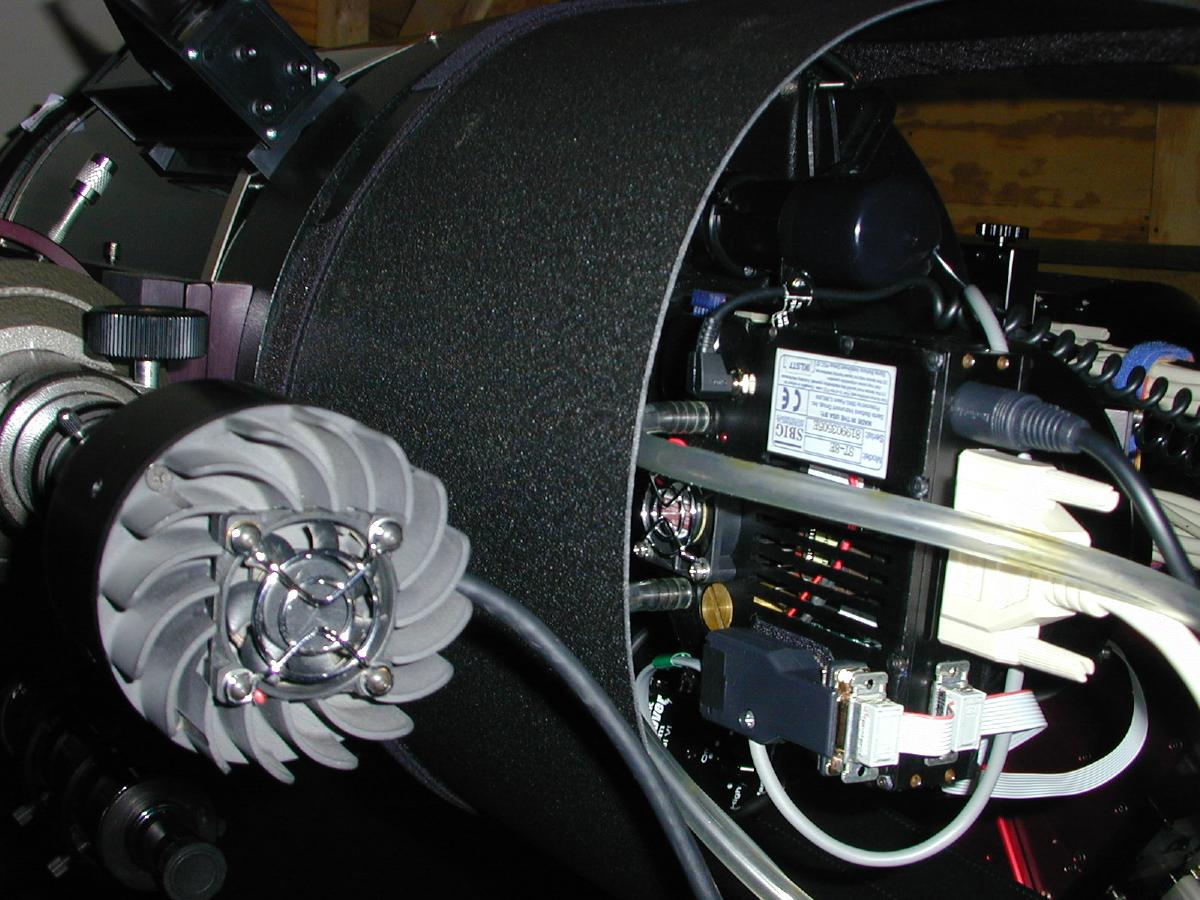
|
This amount of shielding keeps the dew off even if the camera needs to be rotated to frame a shot.
|
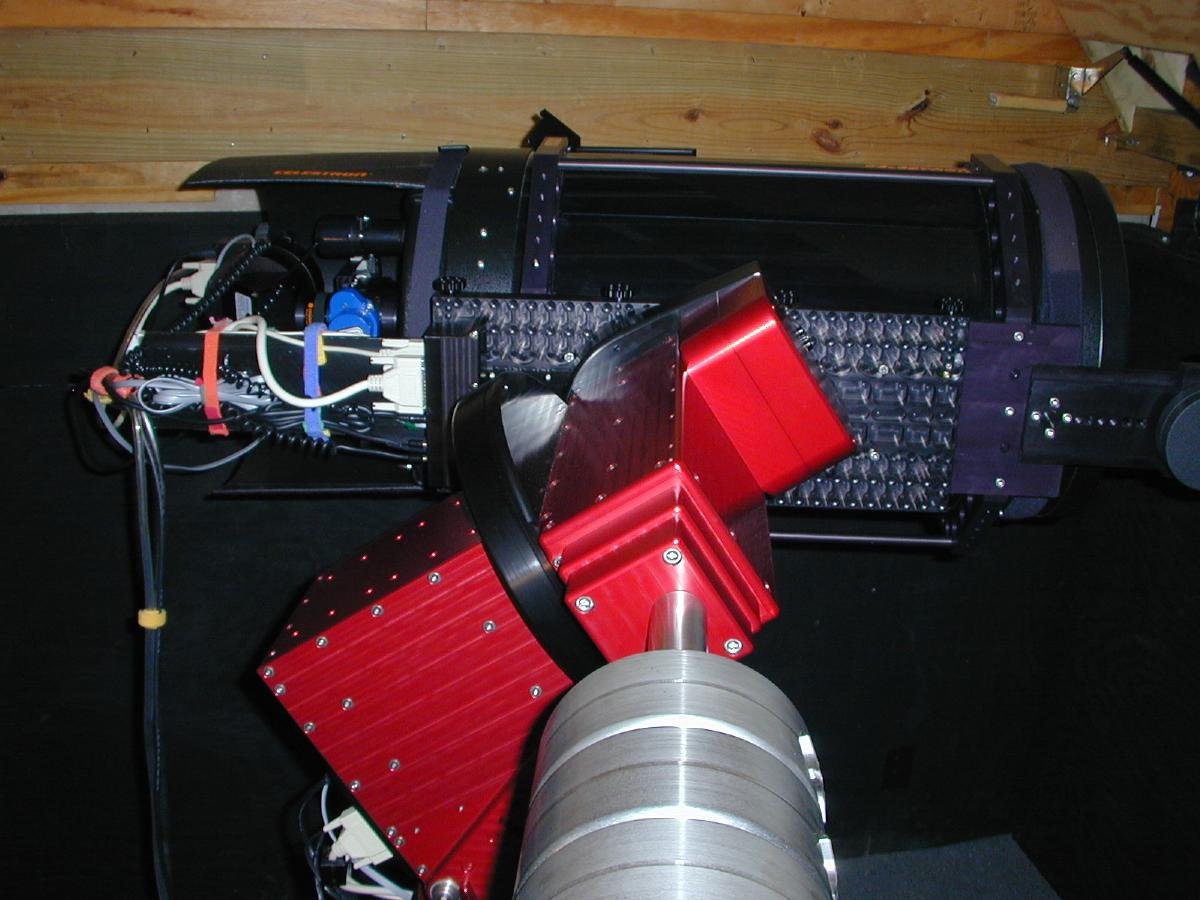
|
Protected, yet open for air circulation, this has been the best solution to date in keeping the camera and all other devices dry.
|
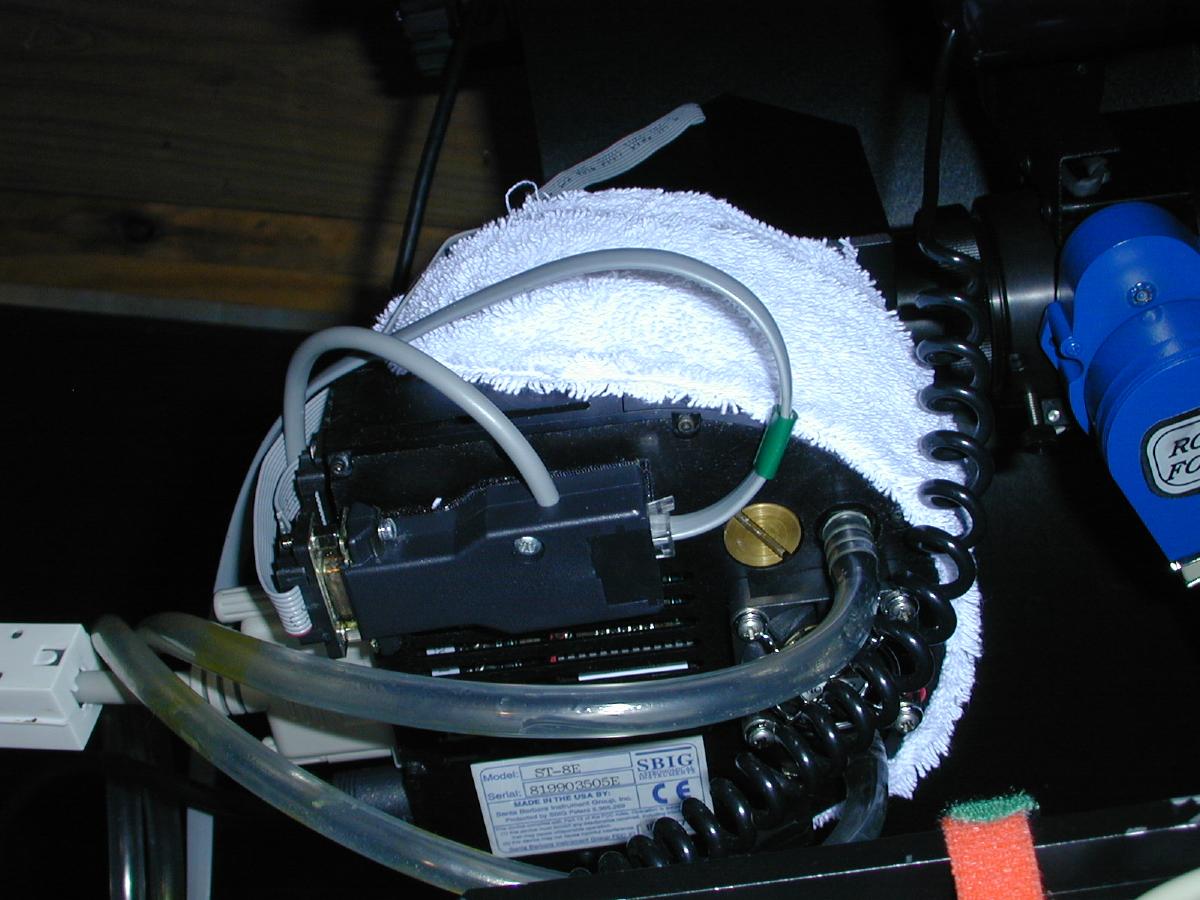
|
When working in the garden, cutting grass, or in general "manual labor" on a hot, humid Saturday afternoon, a sweatband keeps my head dry. I transferred this simple concept to my camera to control condensation.
|
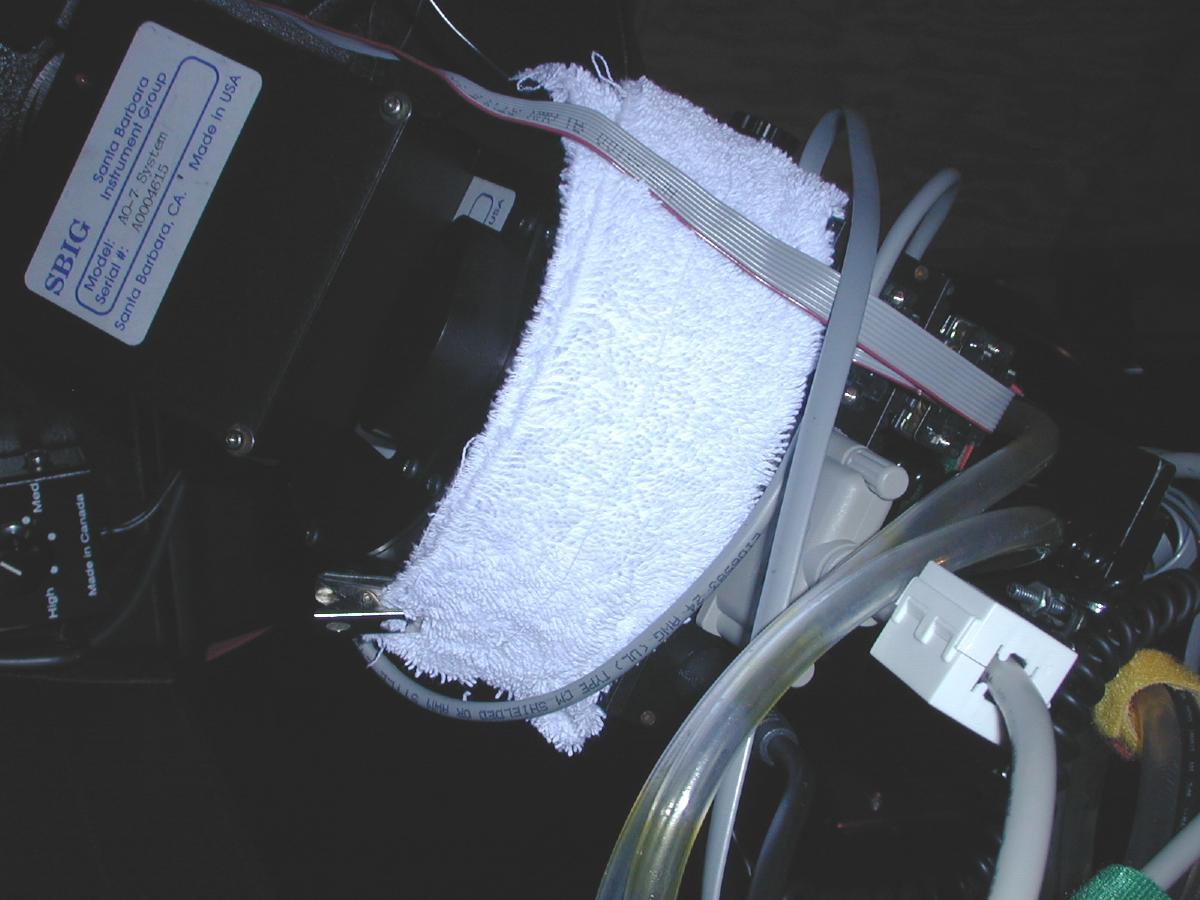
|
Wrap the entire camera with a strip of towel, leaving only the vents open so air will circulate. This almost totally eliminated the condensation problem and now I can cool the camera to -25C with no bad consequences.
|
Even though the Paramount has plenty of cabling for electronics "thru the mount", if you want to run a separate guider with a parallel interface, or run water cooling lines to your camera, you must run these through the mount yourself (assuming enough room and I haven't tried yet) or run them the traditional way. I added an extra plate to the back of my Versa-Plate to give the cabling better support close to the cameras to relieve stress and keep the balance constant across the sky.
Click on any thumbnail picture for the larger version
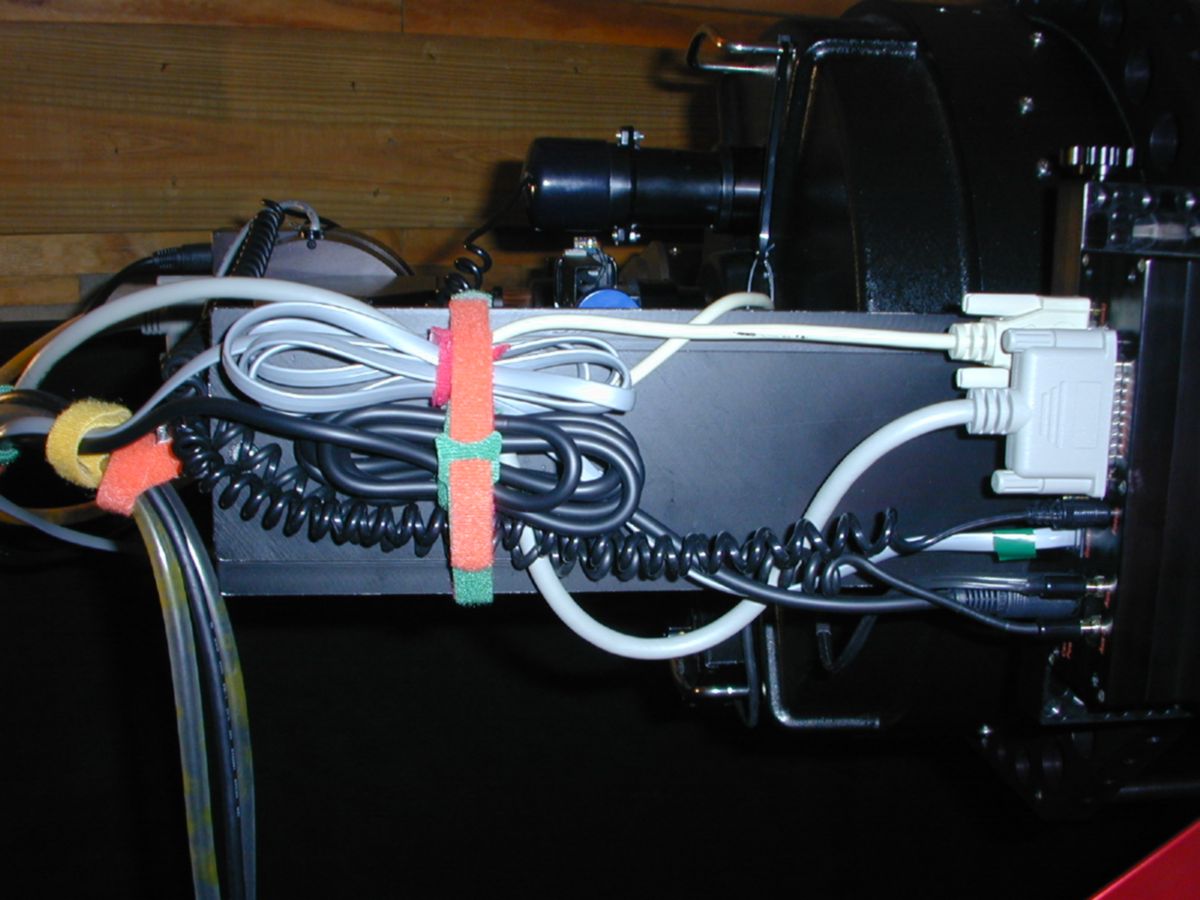
|
The plate helps to extend the support of the cabling out to the cameras.
|
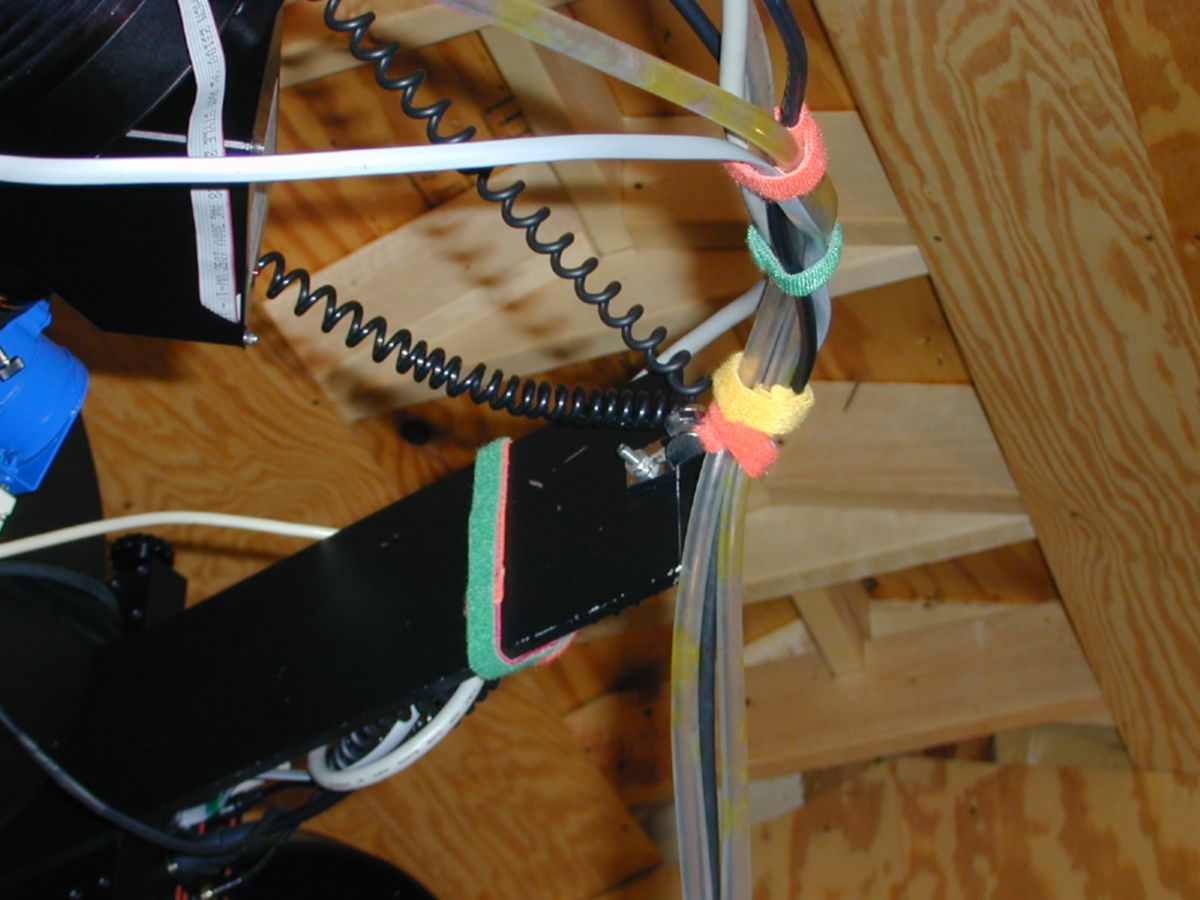
|
Every cable now returns to a single point and makes "all sky" balancing quite easy.
|
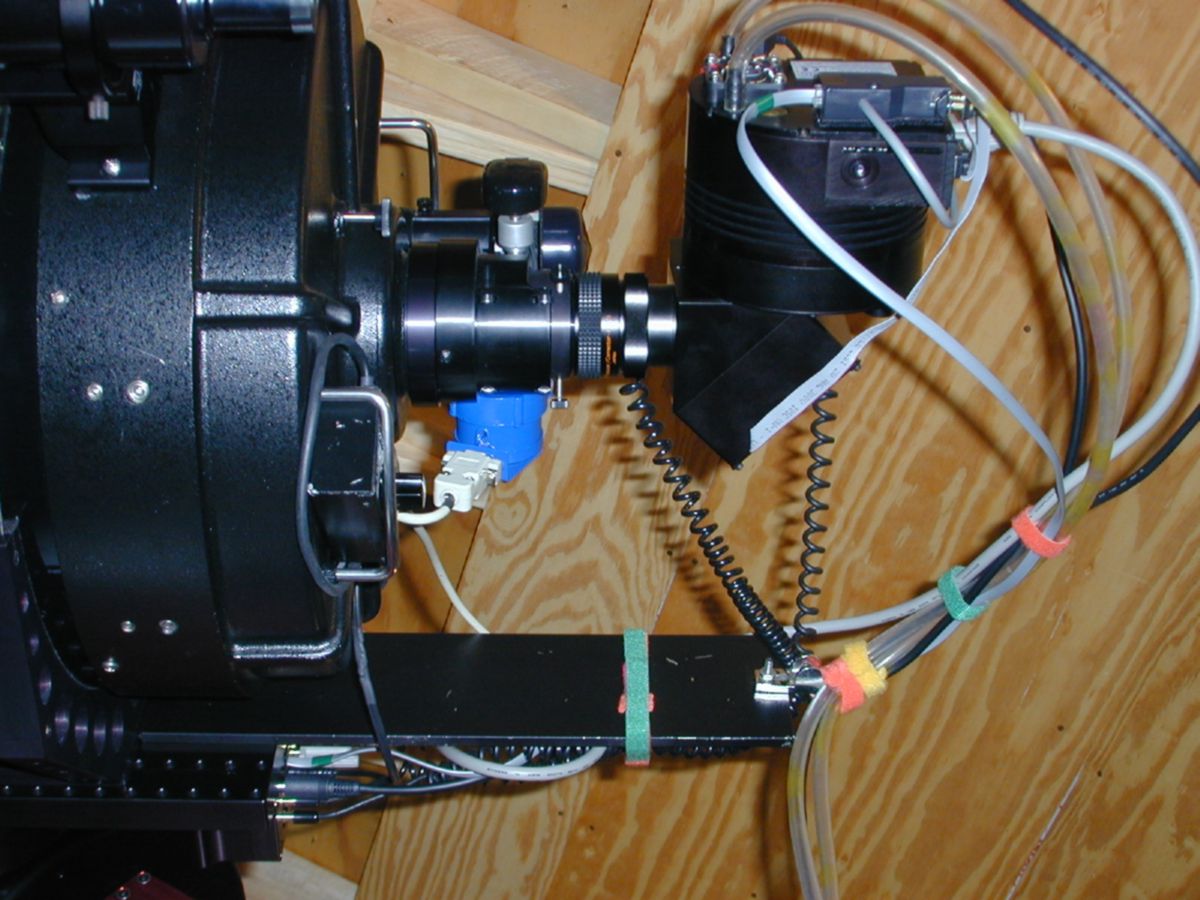
|
Another view to show the routing.
|
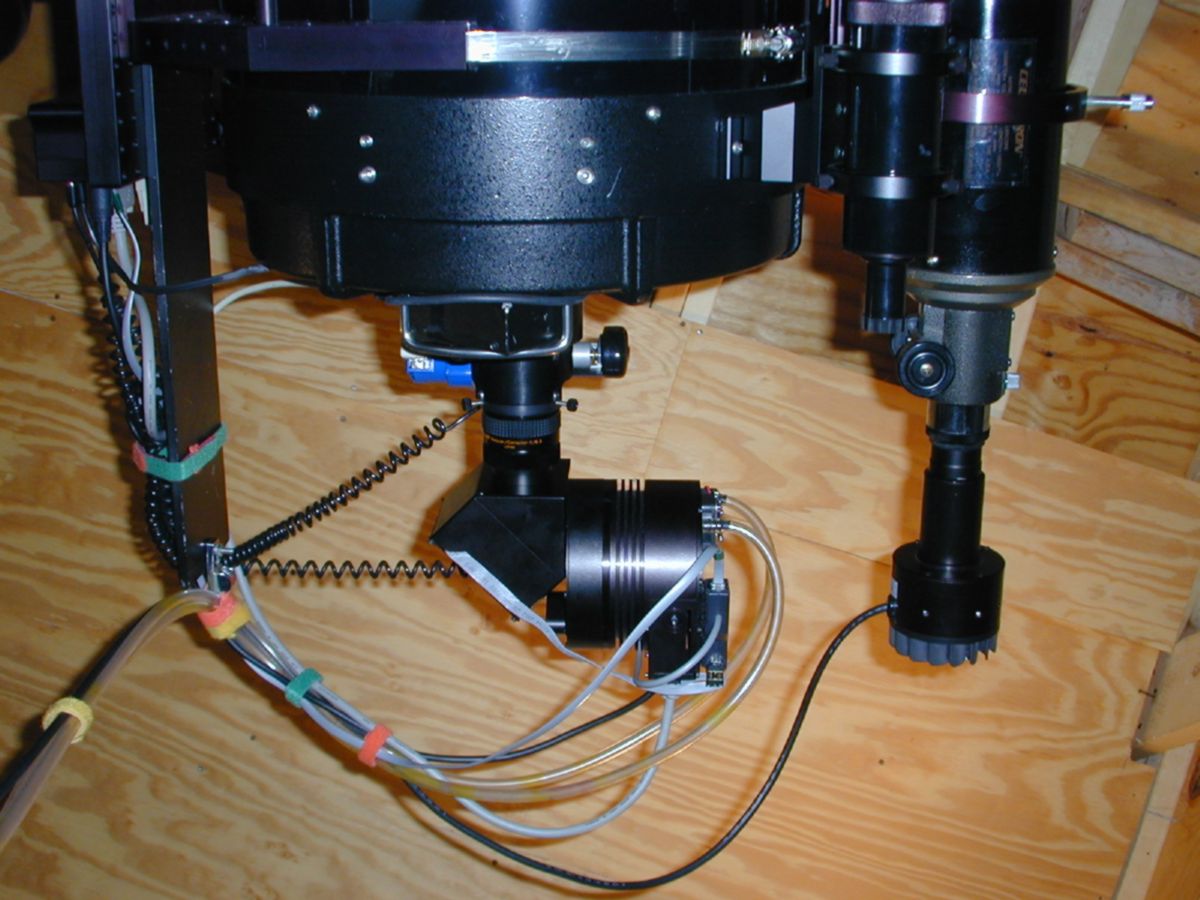
|
Another view.
|
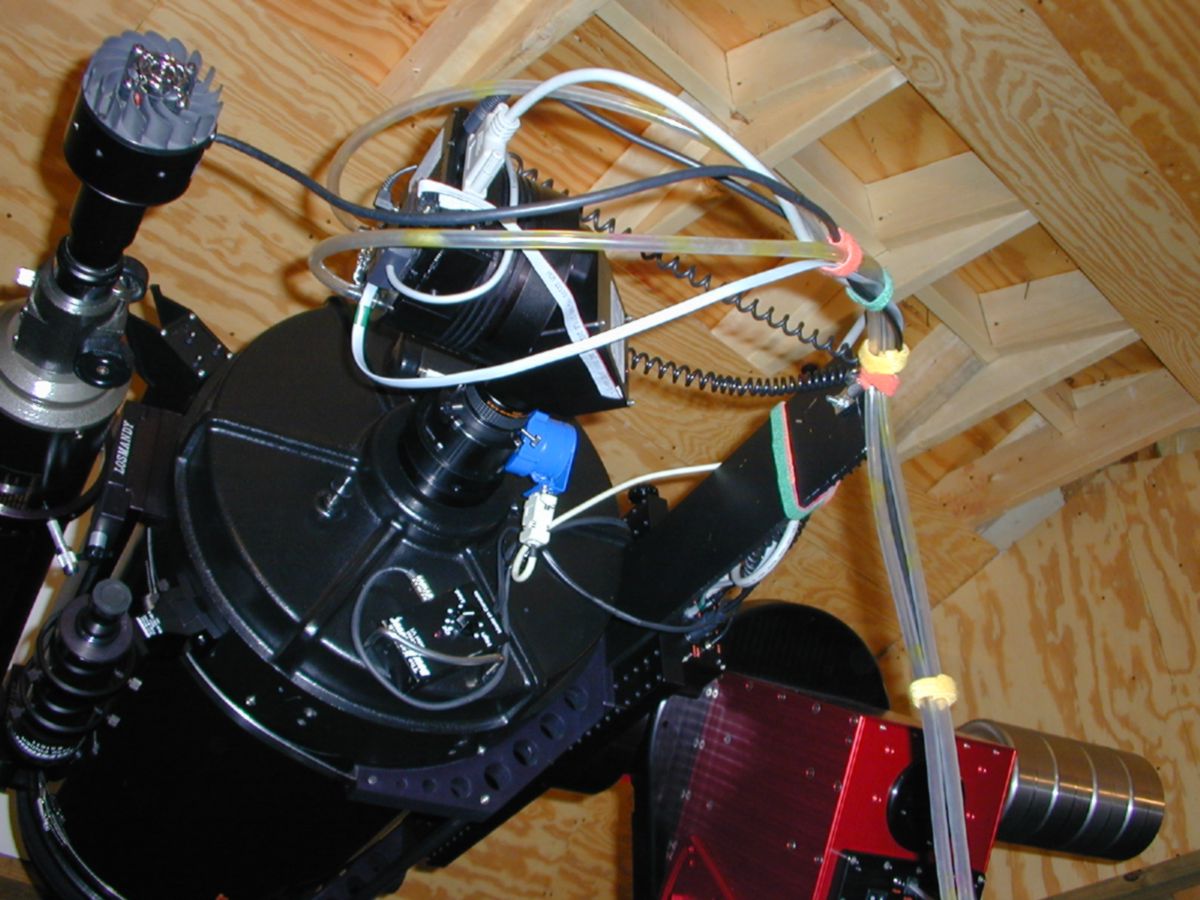
|
This also makes it easier to deal with all the cables that must be moved when rotating the camera, as it keeps the pressure off the delicate connections.
|
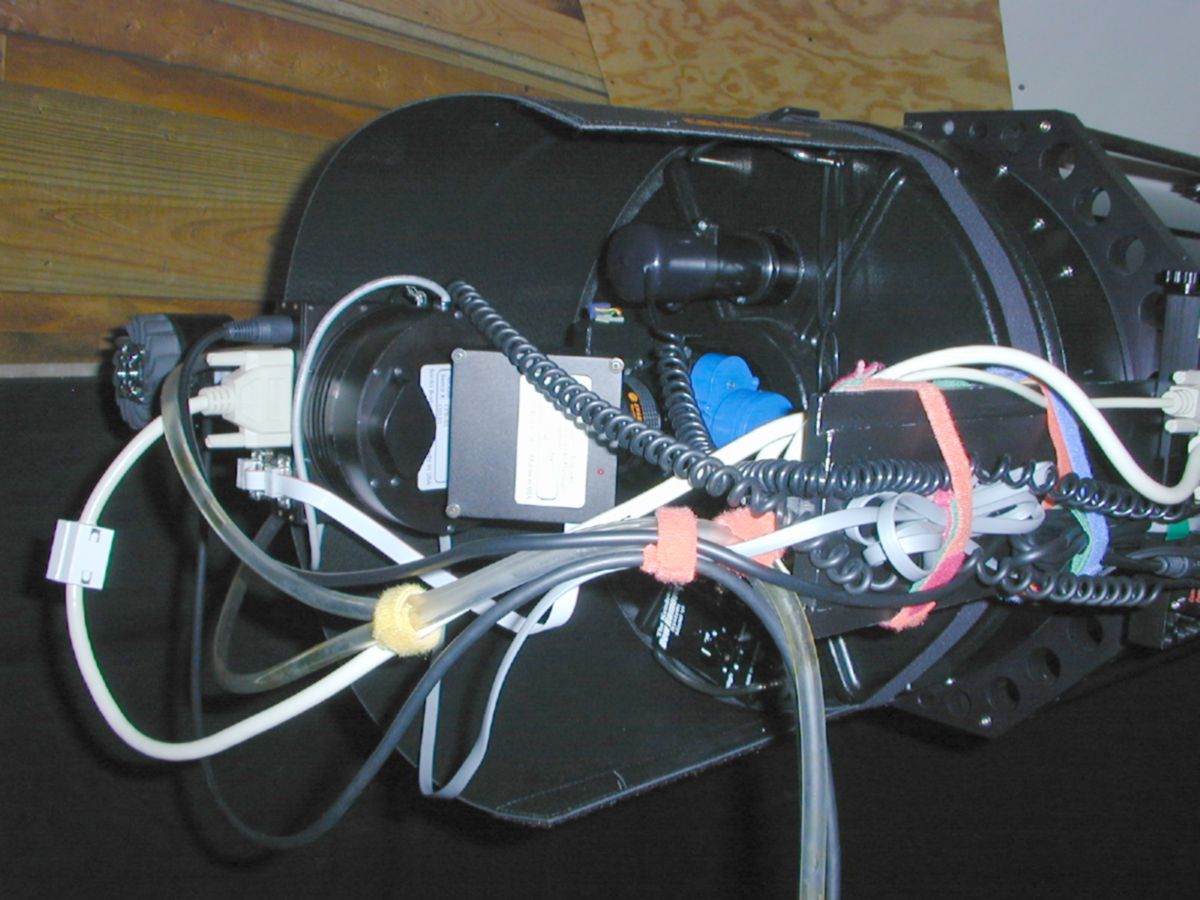
|
Do you think there is enough stuff back here !!
|



